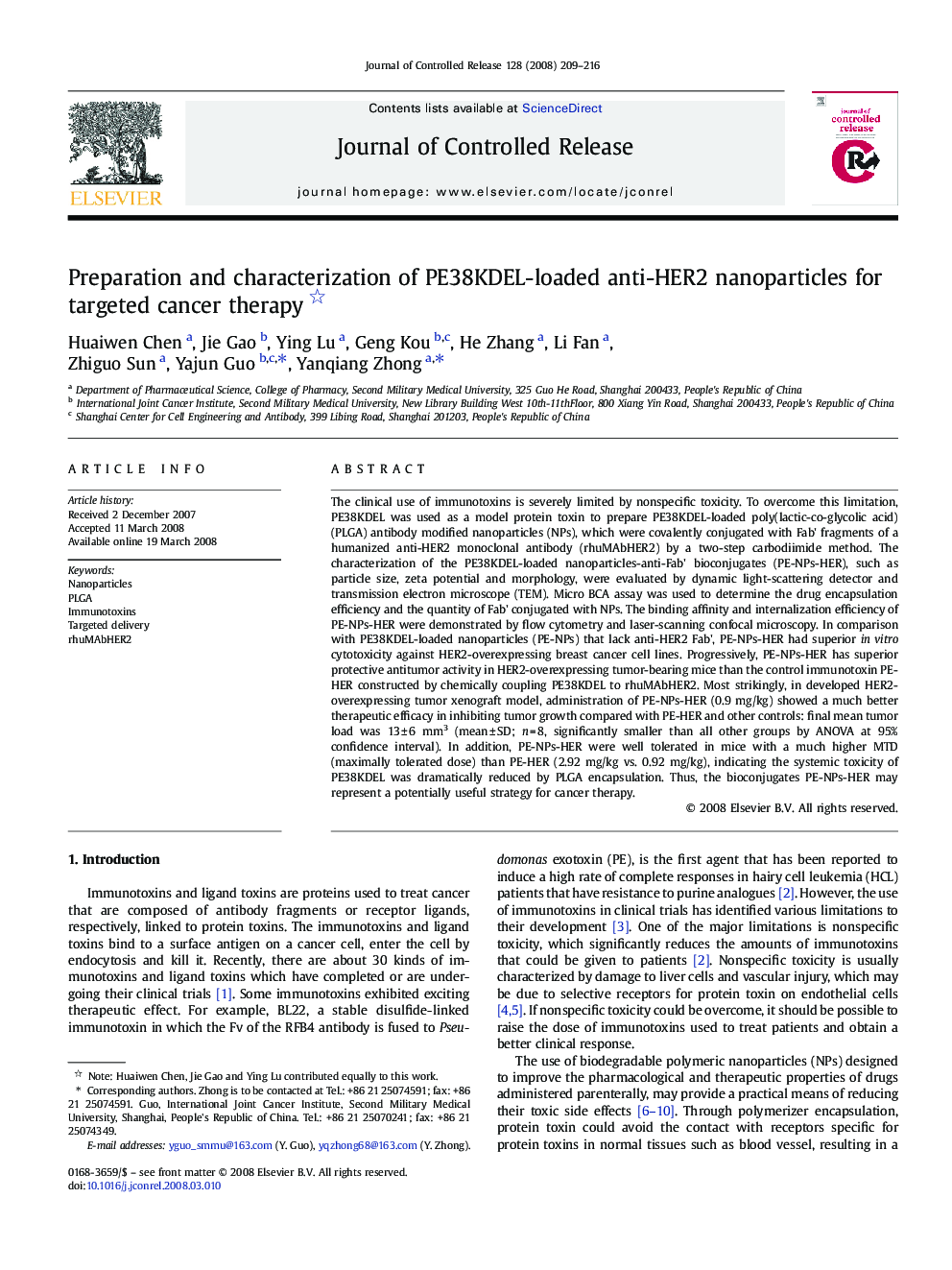| Article ID | Journal | Published Year | Pages | File Type |
|---|---|---|---|---|
| 1426941 | Journal of Controlled Release | 2008 | 8 Pages |
The clinical use of immunotoxins is severely limited by nonspecific toxicity. To overcome this limitation, PE38KDEL was used as a model protein toxin to prepare PE38KDEL-loaded poly(lactic-co-glycolic acid) (PLGA) antibody modified nanoparticles (NPs), which were covalently conjugated with Fab' fragments of a humanized anti-HER2 monoclonal antibody (rhuMAbHER2) by a two-step carbodiimide method. The characterization of the PE38KDEL-loaded nanoparticles-anti-Fab' bioconjugates (PE-NPs-HER), such as particle size, zeta potential and morphology, were evaluated by dynamic light-scattering detector and transmission electron microscope (TEM). Micro BCA assay was used to determine the drug encapsulation efficiency and the quantity of Fab' conjugated with NPs. The binding affinity and internalization efficiency of PE-NPs-HER were demonstrated by flow cytometry and laser-scanning confocal microscopy. In comparison with PE38KDEL-loaded nanoparticles (PE-NPs) that lack anti-HER2 Fab', PE-NPs-HER had superior in vitro cytotoxicity against HER2-overexpressing breast cancer cell lines. Progressively, PE-NPs-HER has superior protective antitumor activity in HER2-overexpressing tumor-bearing mice than the control immunotoxin PE-HER constructed by chemically coupling PE38KDEL to rhuMAbHER2. Most strikingly, in developed HER2-overexpressing tumor xenograft model, administration of PE-NPs-HER (0.9 mg/kg) showed a much better therapeutic efficacy in inhibiting tumor growth compared with PE-HER and other controls: final mean tumor load was 13 ± 6 mm3 (mean ± SD; n = 8, significantly smaller than all other groups by ANOVA at 95% confidence interval). In addition, PE-NPs-HER were well tolerated in mice with a much higher MTD (maximally tolerated dose) than PE-HER (2.92 mg/kg vs. 0.92 mg/kg), indicating the systemic toxicity of PE38KDEL was dramatically reduced by PLGA encapsulation. Thus, the bioconjugates PE-NPs-HER may represent a potentially useful strategy for cancer therapy.
